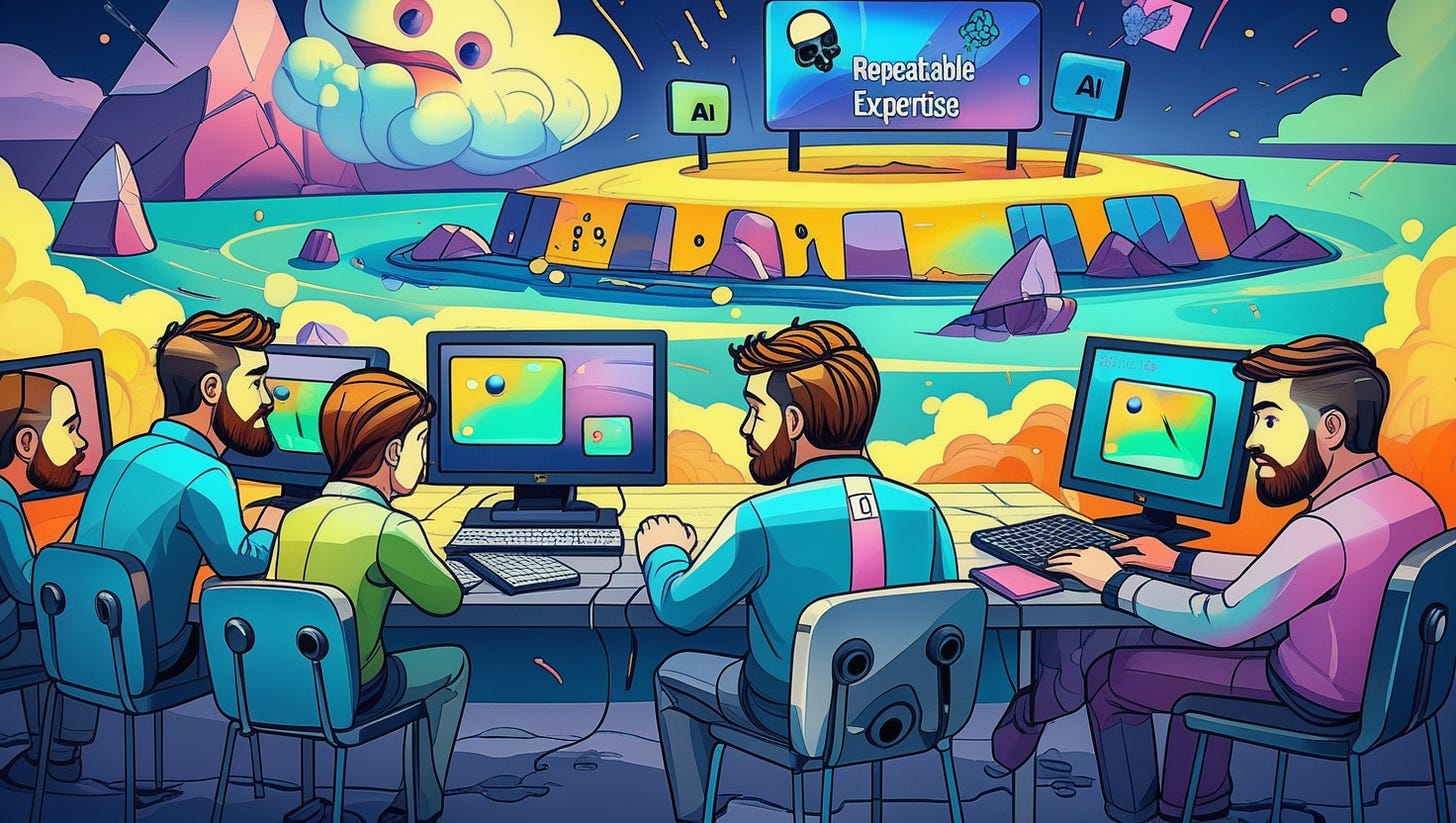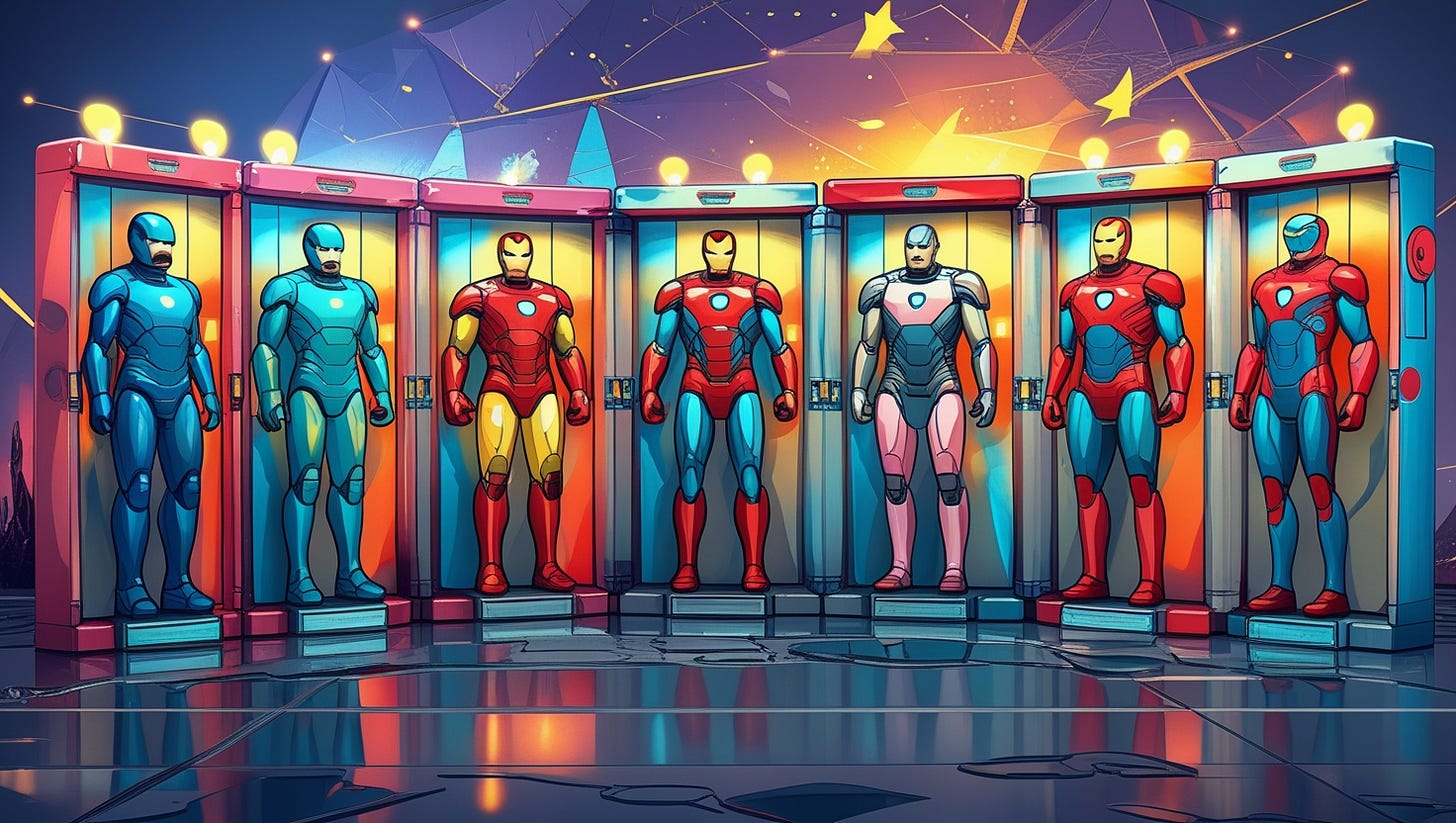Part 6: The CPO’s role in turning GenAI into ROI for the CEO
A product craft since the 1980s to reduce cost, improve quality, and scale a workforce—without burning millions.
When everyone’s talking GenAI… but no one’s sure where to start
Something strange is happening in C-suite business boardrooms.
Inflation is cutting deep. Operational costs are climbing. Customer behaviour is shifting. And every CEO is facing the same high-stakes question from their board or investors:
“Where’s the GenAI in your strategy?”
Most CEOs know they need an answer, but many aren’t able to do it the right way. In the rush to act, many are skipping clarity and leaping straight to procurement.
GenAI becomes a checkbox, not a capability. And product leaders are left scrambling to prove value from tools no one fully understands.
Meanwhile, across industries, we’re watching millions of dollars spent on GenAI… with little to show for it.
The issue isn’t GenAI itself. It’s how CEOs are deploying it: no business case, no operational design, and no leadership alignment.
This is where CPOs must step up. Because the bridge between GenAI promise and GenAI payoff isn’t just technology—it’s one of products’ most valuable crafts.
Rapid Prototyping.
Keep reading to see a LIVE demo of prototyping GenAI.
COMING END JULY 2025!
If you want to ‘Master Agentic GenAI product and design’ before your competition…..
……enjoy a 50% discount for the ‘No Spoon Survival Guide’.
Why the C-Suite keeps getting GenAI wrong
There's a growing disconnect between ambition and execution. The CEO signs off on GenAI budgets under pressure to modernise. Procurement rushes to buy platforms. Teams are told to “start integrating.”
But no one is asking the right questions.
As a result, the failure looms faster than success, resulting in:
Redundancies before reinvention,
Massive spend without strategic signals
GenAI pilots stuck in endless experimentation
CEOs are getting fined because of false claims
Why?
Because too often, GenAI is being positioned as a shortcut to cutting costs, rather than a long-term capability that transforms human workforce capital to scale quality and performance.
The result for many businesses can be damaging, as explained at this year’s AI Engineer Summit.

The result is clear: confusion, frustration, disappointment, and in some cases lawsuits.
The tech looks impressive, but it doesn’t deliver unless evaluated first.
Reframe the question: From cutting costs to unlocking capability
One of the most prominent mistakes executives make when considering GenAI is treating it as a shortcut to cheaper labour.
But automation without purpose accelerates inefficiency. The real opportunity lies not in replacement, but in redesigning how work gets done.

Instead of discussing in the boardroom:
“Where can we replace people with GenAI?”
CPOs can help CEOs ask:
“Where is poor quality eroding margin, and can GenAI help fix it?”
This reframe creates space for a more innovative, more productive conversation, leading to a different way to strategise GenAI.
One that:
Focuses on improving quality instead of removing people
Targets process waste and inefficiencies instead of roles
Amplifies what already works, rather than guessing what might
When GenAI is framed as a tool for ‘continuous operational improvement’, the conversation shifts from fear to foresight.
Now, if you’re a CEO, or board member, thinking this way, you may be asking yourself, but ‘How Might We…’:
Identify where quality is failing in processes?
Find repeatable expertise we are under-leveraging from workforce capital?
Improve processes if we made that knowledge scalable using GenAI?
The answer? It’s pretty simple.
Tony Stark did it in a cave. Designers do it in Figma. Founders do it on whiteboards.
It’s how you test a big idea… before betting the business on it.
Prototyping: What CEOs can learn from a CPO’s craft
Think back to Iron Man.
Tony Stark (CEO of Stark Industries) didn’t walk into a boardroom with a funding request. He built a prototype—in a cave, under pressure—with limited tools.
It wasn’t perfect. But it worked. It proved the idea had legs before asking for scale from the board of investors.
This is precisely the mindset a CPO brings to CEOs to help them navigate the approach to achieving an investment and operations strategy that integrates GenAI into a business.
Prototyping gives CEOs a way to:
Validate whether a use case is viable with GenAI
Understand operational triggers, cost structures, and outcomes
Spot failure points early and cheaply
Align teams on what “good” looks like before building at scale
In short, prototypes de-risk the vision.
Building proof
When it comes to prototyping GenAI, this needs to be more than slide decks and static mockups. These kinds of prototypes come equipped with real business data, insights, and a testable roadmap.
The prototype is now a data point for operational and investment decisions. Clarity of an GenAI system becomes a reality, no matter how rough it is and:
tests assumptions,
surfaces hidden costs, and
observes real-world workflows in action
validates against compliance breaches
The conversation now changes—in the boardroom, to the CEO, or in a cross-functional strategy session with investors.
Using Templonix to surface the uncomfortable truths of GenAI, early
Prototyping isn’t just about building something fast—it’s about surfacing the same patterns cropping up over and over again:
No one had a clear handle on the total cost
Success metrics were vague, shifting, or missing entirely
Teams were excited to build—but had no path to scale or govern what came next
This is what inspired Templonix. It was born from the hard lessons seen in early GenAI failure, where:
most initiatives lacked cost transparency
organisations often didn’t know what “success” looked like
disconnected systems and siloed teams blocked scalability
These lessons gave rise to a ‘real-world prototype’ for executive leaders to provide a shared view of what is working with GenAI, what it will cost, and what latent capacity can be released to cut costs by redistributing human talent and growing and scaling a business.
LIVE DEMO of a Prototype
Here’s a prototype for a use case to automate lesson planning for teachers. It’s one of the most significant time-consuming efforts, taking them away from what they love - educating people:
Using Templonix to identify raw learnings enables the rapid prototype to be iterated with the human (our teacher), and as it’s plugged into the real business data and lightweight infrastructure system, a lifecycle cost model can be created.
When everyone’s talking GenAI…and now know what’s possible
Templonix takes what the prototype reveals to now drive two conversions in the boardroom:
How will GenAI improve operations?
Is the investment amount worth it?
It eliminates the guesswork and provides a real-time data point for implementation planning (operations), ensuring foresight around a given business use case (investment), and supports various scenarios:
“What happens if we scale this GenAI from one function to five regions?”
Operations
Will human time be lost to inefficiency
How much latent workforce capacity will be freed up
What infrastructure costs (compute, storage, etc.) can be reduced through better workflows
Investment
An estimate for NPV and IRR based on the real use case
Understanding long-term costs like fine-tuning, GenAI model retraining, or drift management
GenAI Model margin improvements from reduced error, faster decisions, or repurposed capacity
“No more consulting ‘one-day answer’ slide decks and ‘ROI’ pivot table spreadsheet fantasies. Real-data point prototypes ultimately yield a strategic, GenAI-driven outcome.”
Final thought: The cost of doing nothing is getting higher
Every month, the C-suite boardroom turns GenAI from a buzzword into a bottom line.
Those that prototype reduce costs, automate knowledge work, and retrain their teams to move faster with GenAI and less friction.
The CEOs who wait?
They’ll be the ones explaining why their GenAI budget went nowhere.
“Don’t just install GenAI. Build the system. Train the people. Make ROI inevitable.”
Get that meeting in the CPO diary today, if you want your GenAI to reap ROI!
💬 Found this helpful?
Share your thoughts, ask questions, or challenge the thinking in the comments.
Thanks for 🔁 Restacking and sharing.
🧰 Ready to stop being the last one to product manage and design agentic AI experiences in your organisation?
Join the "No Spoon Survival Guide" waitlist
The exclusive guide is for product managers and designers leaping into agentic AI system design, before everyone else figures it out.
End July 2025!






